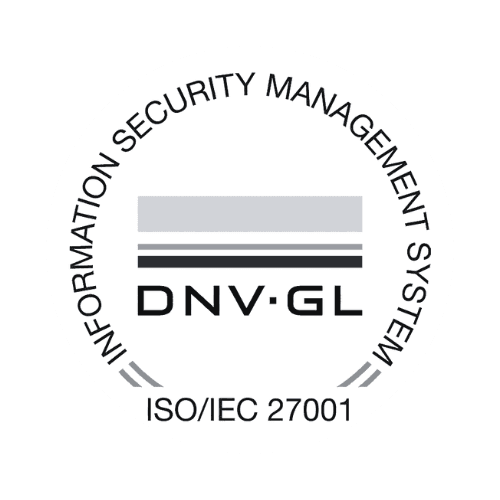Sé el primero en saberlo
Written by AI
Companies Rely on E-Learning: Strategies for Analyzing and Closing Skills Gaps
In today's digital era, companies are increasingly turning to e-learning to train their employees and close skills gaps. E-learning refers to the use of electronic media and technologies for learning, enabling flexible, time- and location-independent learning. This article discusses various strategies for analyzing and closing skills gaps through e-learning.
The Importance of E-Learning in Companies
What is e-learning and why is it important? E-learning refers to the use of digital media, such as online platforms, interactive courses, and virtual training environments, to impart knowledge and skills. Companies use e-learning to efficiently and effectively train their employees, regardless of time and location. By using e-learning, companies can enhance their employees' qualifications and thus increase their competitiveness.
The advantages of e-learning for companies lie in the flexibility and scalability of this form of learning. Employees can learn independently and tailor their learning to their individual needs. Moreover, companies can easily update e-learning content and make it accessible to a large number of employees.
E-learning also enables companies to accurately track and analyze the learning outcomes of their employees. By integrating tests, quizzes, and evaluations into e-learning platforms, companies can continuously monitor their employees' progress and understanding. This data can then be used to plan targeted training measures and optimize the effectiveness of the training.
Furthermore, e-learning allows companies to create their training content in an interactive and engaging manner. By using videos, animations, and simulations, complex topics can be conveyed in an easily understandable way. This helps learners stay motivated and retain what they have learned.
Strategies for Identifying Skills Gaps
Before companies can use e-learning to close skills gaps, it is important to first identify and understand these gaps. Skills gaps arise when employees lack the necessary skills or knowledge to effectively perform their tasks.
There are various methods for identifying skills gaps in a company. One option is to conduct employee evaluations and performance analyses. Through regular performance reviews, companies can identify areas where their employees need support and further training.
Another effective method for identifying skills gaps is to conduct competence and potential analyses. These analyses often include standardized tests and questionnaires to assess employees' current skills and development potential. This allows companies to plan and implement targeted measures for skill development.
Using E-Learning to Close Skills Gaps
Once companies have identified their skills gaps, they can select suitable e-learning programs to specifically close these gaps. It is important that the chosen programs meet the specific needs of the employees and impart the required skills and knowledge.
The implementation of e-learning strategies requires careful planning and organization. Companies should ensure that employees have access to the necessary resources and training materials, and that the technical requirements for e-learning are met. Moreover, it is important for the employees to recognize the benefits of e-learning and be motivated to participate.
The selection of the right e-learning platform is crucial for the success of the training program. There are various types of e-learning platforms, including Learning Management Systems (LMS), Virtual Classrooms, and Mobile Learning Apps. Each platform has its own advantages and disadvantages, so it is important to consider the needs of the company and the employees in order to choose the appropriate platform.
An effective e-learning strategy also involves regularly monitoring and evaluating the progress of the employees. Companies should implement mechanisms for performance measurement to ensure that training goals are achieved. Weaknesses can be identified and the e-learning program can be continuously improved through feedback and analysis.
Measuring the Success of E-Learning Initiatives
Companies can use various evaluation methods to assess the effectiveness of e-learning. One option is to conduct learning checks and tests to determine whether employees have acquired the desired skills and knowledge.
In addition, feedback surveys and interviews with employees can be conducted to determine their satisfaction with the e-learning program. This feedback can be used to continuously improve the e-learning strategy and better meet the needs of the employees.
Evaluating the Effectiveness of E-Learning
E-learning offers companies an effective way to close skills gaps and further train employees. Through the use of e-learning programs, employees can learn flexibly and independently, regardless of time and location. However, companies should regularly evaluate the effectiveness of their e-learning approach and make improvements to ensure that the desired goals are achieved.
Continuous Improvement of E-Learning Strategies
The world of e-learning is constantly evolving, and companies should continuously improve their e-learning strategies to keep pace with technological changes. New learning formats and technologies offer companies the opportunity to make their training measures more effective and interactive.
Companies should also promote the exchange of best practices and learn from other companies that have successfully implemented e-learning strategies. Through continuous improvement and adaptation, companies can ensure that e-learning is used for targeted analysis and closing of skills gaps, thereby contributing to the increase of organizational efficiency and competitiveness.
Another important aspect in evaluating the effectiveness of e-learning initiatives is the analysis of learning outcomes. For example, companies can compare the performance of employees before and after participating in an e-learning program to determine whether their skills and knowledge have improved. Moreover, companies can also examine the impact of e-learning on business results by measuring, for example, employee productivity or error rates.
To further promote the acceptance and success of e-learning initiatives, companies should also address the needs and preferences of the employees. This can be achieved by providing personalized learning content, interactive elements, and a user-friendly learning platform. By taking into account the individual learning needs of employees, companies can increase the motivation and engagement of employees in e-learning.








